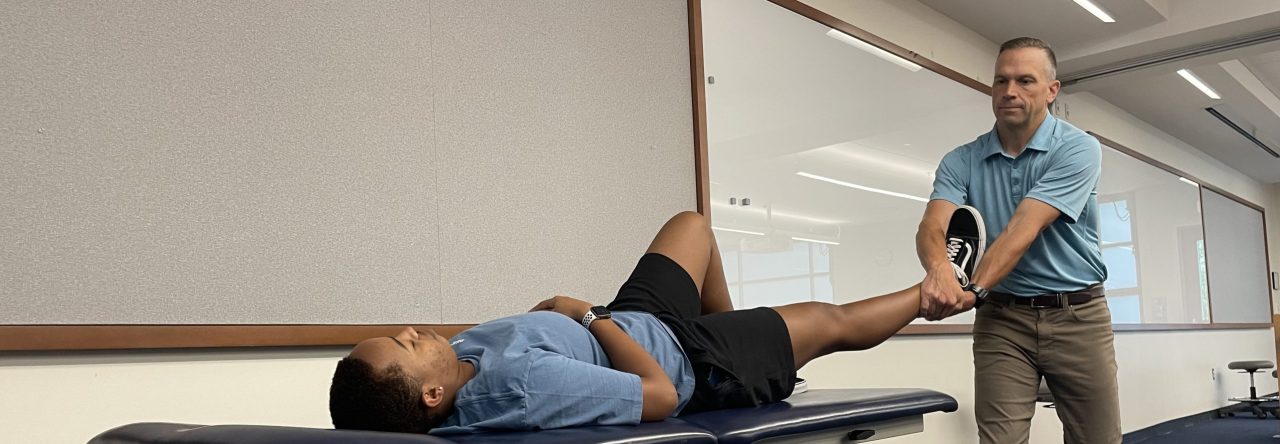Author Names
Turkistani, A., Shah, A., Jose, A.M., Melo, J.P., Luenam, K., Ananias, P., Yaqub, S., & Mohammed, L.
Reviewer Name
Shelby Dobratz, SPT
Reviewer Affiliation(s)
Duke University School of Medicine, Doctor of Physical Therapy Division
Paper Abstract
Tension-type headache is one of the most prevalent types of headache. The common presentation is a mild-to-moderate dull aching pain around the temporal region, like a tight band around the forehead, neck, shoulder, and sometimes behind eyes. It can occur at any age but most commonly in the adult female population. The exact underlying mechanism is not clear but muscle tension is one of the main causes, which can be due to stress and anxiety. There are several non-pharmacologic treatment options suggested for tension-type headaches, such as cognitive behavioral therapy, relaxation, biofeedback, acupuncture, exercise, manual therapy, and even some home remedies. This systematic review was performed to evaluate the effectiveness of acupuncture and manual therapy in tension-type headaches. The literature search was primarily done on PubMed. Eight articles involving 3846 participants showed evidence that acupuncture and manual therapy can be valuable non-pharmacological treatment options for tension-type headaches. Acupuncture was compared to routine care or sham intervention. Acupuncture was not found to be superior to physiotherapy, exercise, and massage therapy. Randomized controlled trials done in various countries showed manual therapy also significantly decreased headache intensity. Manual therapy has an efficacy that equals prophylactic medication and tricyclic antidepressants in treating tension-type headaches. The available data suggests that both acupuncture and manual therapy have beneficial effects on treating symptoms of tension-type headache. However, further clinical trials looking at long-term benefits and risks are needed.
NIH Risk of Bias Tool
Quality Assessment of Systematic Reviews and Meta-Analyses
- Is the review based on a focused question that is adequately formulated and described?
- Yes
- Were eligibility criteria for included and excluded studies predefined and specified?
- Yes
- Did the literature search strategy use a comprehensive, systematic approach?
- Yes
- Were titles, abstracts, and full-text articles dually and independently reviewed for inclusion and exclusion to minimize bias?
- Cannot Determine, Not Reported, Not Applicable
- Was the quality of each included study rated independently by two or more reviewers using a standard method to appraise its internal validity?
- Were the included studies listed along with important characteristics and results of each study?
- Yes
- Was publication bias assessed?
- No
- Was heterogeneity assessed? (This question applies only to meta-analyses.)
- Cannot Determine, Not Reported, Not Applicable
Key Finding #1
Manual therapy is the most common non-pharmacological treatment for tension-type headaches (TTH) and significant effects of manual therapy on relieving TTH were significant.
Key Finding #2
Manual therapies focused on massage intervention for TTH showed significant decreases in headache frequency as well as intensity.
Key Finding #3
Combined results across professionals administering manual therapy showed significant positive effects on relieving TTH from self-reported surveys.
Key Finding #4
There was a decrease in headache frequency, decrease in headache severity, and increased cervical range of motion of individuals receiving manual therapy after 8 weeks.
Please provide your summary of the paper
This study summarized findings from eight different research studies that investigated the effectiveness of either manual therapy or acupuncture on tension-type headaches (TTH). Typical treatment options for TTH included pharmacological methods such as analgesics, anticonvulsants, antidepressants, NSAIDs, and triptans. Non-pharmalogical treatment options included cognitive-behavioral therapy, biofeedback, mindfulness training, acupuncture, nutritional supplementation (magnesium, vitamin B12, vitamin B6, and coenzyme Q10), and physical therapies (specifically manual therapy). It appeared that any study depicting the benefit of manual therapy versus a control group for TTH resulted in significant positive effects, proving manual therapy to be a beneficial intervention for these individuals. They also found that individuals who received acupuncture noted a decrease in headache frequency. Researchers inspected the reasoning for why manual therapy is effective in this population, and they discussed the myofascial trigger release points (MTrPs). It was found that individual’s with TTH have an increased number of MTrPs and would benefit from increasing the pressure-pain threshold on these areas with manual therapy. In addition to the benefits on manual therapy on TTH, there may be adverse effects such as muscle stiffness, soreness, increased pain, fatigue, and weakness to be cognizant of while considering the patient’s presentation.
Please provide your clinical interpretation of this paper. Include how this study may impact clinical practice and how the results can be implemented.
This review helped to guide clinicians on the path of choosing manual therapy as an intervention for patients who present with chronic tension-type headaches and provided data and reasoning to back up the positive effects of doing so. Since this review was focused on research with adults with TTH, the pediatric population was not included, warranting additional research to gain insight with varying populations. In addition, publication bias may have been a factor with this analysis and should be considered when implementing the results.
